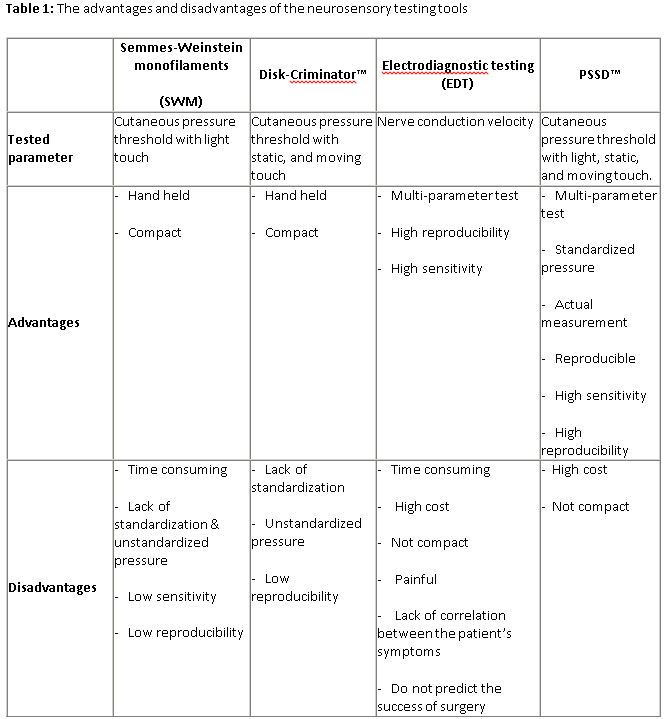Comparison of Neurosensory Assessment Methods in Plastic Surgery
Huseyin Karagoz, MD, PhD1; Sinan Ozturk, MD1; Maria Siemionow, MD, PhD, DSc2
1Gulhane Military Medical Academy, Haydarpasa Training Hospital, Istanbul, Turkey, 2Department of Orthopaedics, University of Illinois at Chicago, Chicago, IL
Introduction: Sensory measurement of the skin is crucial to document the function of the sensory fibers of the tested nerves. However this task is challenging, as there is no optimal method available that would identify sensory changes objectively. Although many instruments and tools have been described for sensory assessment, none is used as a standard of care due to different drawbacks. However, an increasing number of articles, which recognizes the reliability of PSSD have been published during the last decade. We compared the sensory assessment methods.
Methods: The Semmes-Weinstein monofilaments, disk-criminator, electrodiagnostic testing, and Pressure-Specified Sensory Device (PSSD) have been currently used to assess sensory function of peripheral nerves. We compared these sensory assessment methods and reviewed the applications of the PSSD in the field of different clinical areas.
Results: The advantages and disadvantages of the neurosensory testing tools are presented in Table 1. There have been several studies comparing sensitivity/specificity and/or reproducibility of PSSD with other tools used for quantification of skin sensitivity, such as EDT or SWMs. The applications of the PSSD are mainly in the field of peripheral neuropathies, breast and flap surgery.
Conclusions: PSSD is a versatile tool facilitating non-invasive assessment of sensory innervation in different clinical scenarios pertinent to peripheral nerve damage and regeneration.
Back to 2017 ePoster Listing
